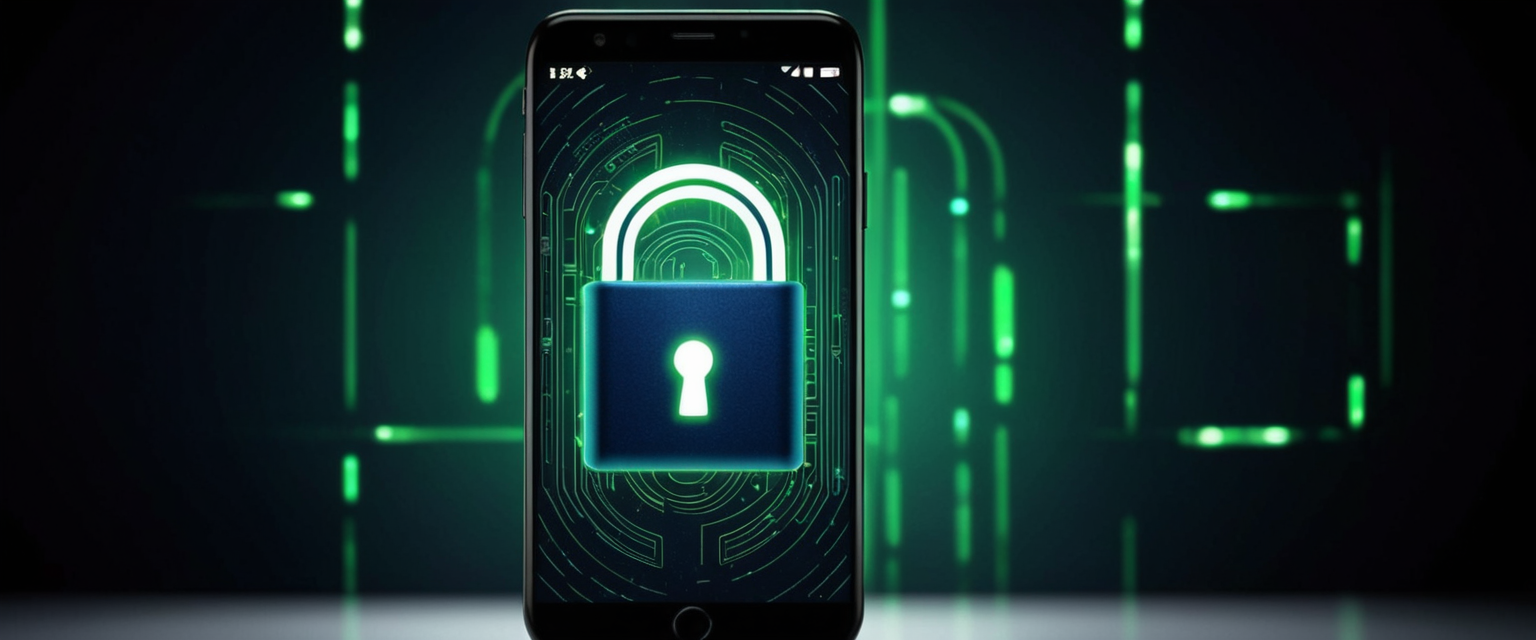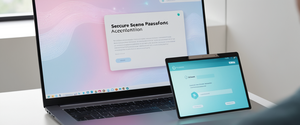
This comprehensive analysis examines the optimal security configurations for authenticator applications within the context of encrypted login credentials and authentication infrastructure. Authenticator apps serve as critical components of multi-factor authentication (MFA) systems, generating time-based one-time passwords (TOTP) and managing secure verification protocols that protect sensitive accounts across financial services, enterprise systems, and personal platforms. The fundamental challenge addressed in this report centers on maximizing the security posture of these applications through strategic configuration of built-in security features while maintaining operational usability for legitimate users. The analysis synthesizes current best practices from leading authenticator platforms—including Bitwarden, Google Authenticator, Microsoft Authenticator, Aegis, and Authy—to establish a comprehensive framework for authenticator app lockdown that balances security rigor with practical implementation considerations. Key findings indicate that effective authenticator app security requires a layered approach combining access controls, encryption protocols, backup mechanisms, recovery procedures, and threat-specific mitigations tailored to individual risk profiles and device ecosystems.
Fundamentals of Authenticator App Security and the Defense-in-Depth Approach
Authenticator apps represent a sophisticated but potentially vulnerable component of the two-factor authentication ecosystem that requires immediate protection through deliberate security configuration choices. Unlike passwords stored in centralized databases, authenticator apps store cryptographic secrets directly on user devices, creating a unique attack surface that encompasses both the application layer and the underlying device security. The foundational purpose of an authenticator app is to generate time-sensitive verification codes based on shared secrets established during account setup—typically through QR code scanning or manual key entry. These codes, usually valid for approximately thirty seconds and based on the current time using HMAC-SHA1 or similar cryptographic algorithms, provide mathematical proof that the user possesses both the correct password and the registered authenticator device. However, this security model depends entirely on the confidentiality of the shared secret key and the integrity of the application managing it, creating a dependency chain that extends from the device’s operating system through the authenticator app to the user’s authentication behavior.
The threat model for authenticator apps encompasses multiple attack vectors that security configurations must address systematically. Physical device access represents perhaps the most direct threat, where an attacker in possession of an unlocked phone can potentially access authenticator codes, view secret keys (if improperly exposed in the application interface), and complete authentication without the legitimate user’s knowledge. Malware and compromised applications constitute a second critical threat vector, as any software with device access permissions could potentially read authenticator secrets from storage or intercept codes during generation and display. Social engineering attacks, particularly MFA fatigue attacks involving repeated push notifications designed to overwhelm users into accidental approval, represent a sophisticated threat that configuration settings can meaningfully mitigate. Supply chain attacks and unauthorized device provisioning, wherein personal devices become enrolled in enterprise systems without explicit user knowledge, present emerging threats that proper configuration can help prevent or detect. Device loss or theft creates a specific recovery scenario where backup mechanisms become simultaneously critical for legitimate account access but dangerous if not properly configured, as an attacker accessing backups could compromise multiple accounts simultaneously.
Best practice security frameworks for authenticator app configuration draw from the principle of defense-in-depth, establishing multiple overlapping controls such that compromise of any single mechanism does not result in complete account compromise. This principle manifests in authenticator app security through the combination of application-level access controls (biometric requirements, screen locks), device-level encryption (applying the device’s security hardware to protect authenticator data), backup encryption using distinct credentials, offline functionality preventing network-based attacks during code generation, and strategic recovery mechanisms that balance accessibility with security. The challenge in implementing this defense-in-depth approach lies in configuration decisions where tighter security measures may create operational friction, potentially encouraging users to disable security features entirely or circumvent security policies. Effective authenticator app lockdown therefore requires understanding the specific security threats most likely given an individual’s threat model, determining which configuration settings address those threats most effectively, and establishing recovery procedures that maintain account accessibility even when security mechanisms prevent normal authentication pathways.
Essential Access Control Settings: Implementing Application-Level Barriers
The most direct and operationally critical security settings available in authenticator applications involve access control mechanisms that prevent unauthorized persons from opening the app and accessing codes or secrets. Application-level locks represent the primary control layer, separate from device-level security, that restricts access specifically to the authenticator app rather than relying on general device protection mechanisms. These app-specific locks prove essential because many users maintain unlocked devices for convenience, particularly smartphones kept on their person, creating a scenario where device possession alone should not grant access to authentication factors. The most widely recommended approach involves enabling biometric authentication—fingerprint or facial recognition—as the primary unlock mechanism for the authenticator app, as this creates a physical possession plus biological factor requirement that significantly increases security without requiring users to memorize additional credentials.
Implementing biometric app locks requires several deliberate configuration steps across major authenticator platforms. Google Authenticator’s 2025 updates introduced a “Privacy Screen” feature allowing users to protect access through device screen lock, PIN, fingerprint, or facial recognition, with configuration available in the app’s security settings. Microsoft Authenticator provides an “App Lock” feature that, when enabled through the settings interface, requires PIN or biometric authentication every time the user opens the application—creating a session-based access control where users must re-authenticate after periods of inactivity or when returning to the app from other applications. Importantly, Microsoft’s App Lock is enabled by default when users set up any PIN or biometric on their device, though this automatic enabling can create confusion if users are unaware of the configuration. Bitwarden’s authenticator component offers similar protection capabilities, allowing users to configure Face ID or Touch ID access controls, with additional granularity through master password re-prompt requirements at the account or field level.
PIN-based authentication serves as a secondary or primary access control mechanism when biometric authentication is unavailable or disabled. PIN configuration should follow established complexity standards requiring minimum length (typically eight to twelve digits for numerical PINs to prevent brute force attacks), avoiding obvious sequences or easily guessable numbers, and requiring re-entry after device restarts or extended periods away from the app. The NIST guidelines for authentication recommend throttling failed PIN attempts to prevent rapid brute force attacks, with increasing delays or temporary lockouts after multiple failures—a control that should be verified in authenticator app settings or implemented through device-level restrictions. Users should ensure their device itself has biometric or PIN protection enabled, as this creates a prerequisite security layer preventing any application access (including the authenticator app) without initial device authentication.
Session timeout configurations represent an often-overlooked but critically important access control setting that automatically logs users out of the authenticator app after periods of inactivity, requiring re-authentication through biometric or PIN methods before accessing codes again. Microsoft Authenticator supports session timeout configuration, where users can set the duration before automatic logout, with shorter timeouts (five to fifteen minutes) providing better security for high-value accounts while longer timeouts reduce operational friction. Session timeouts prove particularly valuable in scenarios where devices are left unattended briefly, where an attacker gaining temporary device access cannot immediately use the authenticator without re-authenticating. The tradeoff involves user convenience—very short timeouts require frequent re-authentication, potentially encouraging users to disable this control—so configuration should reflect the device’s typical use environment and the sensitivity of accounts protected through the authenticator.
Screen capture prevention capabilities, available in applications like Microsoft Authenticator and LastPass Authenticator, prevent other applications or screen recording software from capturing authenticator codes and secrets. This feature operates at the operating system level by marking the authenticator window as non-capturable, though this protection applies only to legitimate screen recording mechanisms and provides no protection against compromised devices where malware operates with system-level privileges. Enabling screen capture prevention through the app settings (“Screen Capture” toggle in Microsoft Authenticator settings, for example) provides a reasonable defensive measure against casual compromise scenarios while acknowledging that comprehensive device compromise cannot be addressed through application-level controls.
Tap-to-reveal functionality, implemented in Aegis Authenticator and other security-focused applications, adds an additional friction point by requiring explicit user action (pressing and holding on an authenticator code) to display the numerical code rather than showing all codes continuously on the main screen. This design pattern prevents accidental exposure of codes through over-the-shoulder viewing or brief device access, though it increases operational friction when users must rapidly retrieve codes during time-sensitive login processes. The security benefit proves most significant in environments where multiple people share physical spaces and casual code visibility presents a meaningful attack vector.
Encryption and Data Protection: Securing Secrets at Rest and in Transit
The cryptographic protection of stored authenticator secrets represents the core technical security requirement for authenticator apps, as these secrets constitute the fundamental credentials enabling account access if disclosed to attackers. All modern authenticator applications should employ industry-standard encryption—specifically AES-256 or equivalent—to protect secrets stored on the device, ensuring that even if an attacker gains file system access to the device, the encrypted data remains unreadable without the encryption key. The implementation of this encryption standard should be verified in the application’s security documentation or source code (particularly important for open-source applications), as inconsistent or weak encryption would create a critical vulnerability regardless of other security controls.
The encryption key derivation process—how the application derives encryption keys from user-provided credentials—critically determines the practical strength of encryption protections. Bitwarden implements a security model where the authenticator encryption key derives from the user’s master password through a key derivation function (KDF), specifically scrypt, which applies computational effort to make brute force attacks against the password impractical. Microsoft Authenticator uses the device’s secure enclave or keychain (on iOS through iCloud Keychain, on Android through the device’s locked storage) to store encryption keys, meaning the authenticator backup encryption depends on the security of the device’s hardware security module and the user’s device unlock credential. Google Authenticator’s cloud syncing, newly introduced in 2025, encrypts backup data with the user’s Google Account credentials, meaning an attacker would need both the Google Account password and access to authenticate to the user’s Google Account to decrypt stored codes—though this creates a single point of failure if the Google Account is compromised.
Master password security becomes critically important in systems where the master password serves as the encryption key or key derivation input for authenticator secrets. In Bitwarden’s model, users should establish a strong master password meeting complexity requirements (minimum length of twelve characters, combination of uppercase, lowercase, numerals, and symbols) as this password directly determines the practical security of all stored secrets including TOTP codes. The master password should be unique to the password manager and different from passwords used elsewhere, as compromise of the master password exposes all stored credentials including authenticator secrets. Users should never share master passwords, write them down where others might access them, or use trivially guessable variations of personal information.
Biometric protection of encryption keys, implemented in Microsoft Authenticator and similar applications, provides enhanced security by requiring biometric authentication (fingerprint or facial recognition) before the application can unlock and decrypt stored secrets. This approach creates an additional factor requirement—the device must be present and the user must be present to authenticate biometrically—preventing remote attacks where an attacker has obtained the device’s encryption key through network compromise but lacks the ability to provide the required biometric. However, users should understand that biometric authentication relies on the device’s hardware security module and the operating system’s protection of biometric data; compromise of the device at the firmware level could potentially bypass biometric protections.
End-to-end encryption of backup data requires particular attention in authenticator app configuration, as backup mechanisms necessarily transmit secrets to cloud storage systems, creating a potential vulnerability point if encryption is not properly implemented. Microsoft Authenticator implements end-to-end encryption for backups by encrypting account credentials and codes with a key derived from the user’s Microsoft account credentials before transmitting to OneDrive or iCloud, meaning Microsoft (or Apple) cannot access the plaintext authenticator secrets. Users can verify this through the support documentation, which explicitly states that only the Microsoft Authenticator app on a device signed in with the same account can decrypt the backup. In contrast, services that backup authenticator secrets without end-to-end encryption—where the service provider can access plaintext secrets—should not be trusted with critical authenticator codes, as this creates a complete single point of failure at the service provider.
Transport layer security (TLS/HTTPS) should be verified for any authenticator configuration that involves network transmission of authenticator secrets, such as cloud backup or multi-device synchronization. This verification involves confirming that backup and sync operations use HTTPS (not HTTP) and that the application validates server certificates to prevent man-in-the-middle attacks. For offline-only authenticator applications without cloud backup or synchronization, transport security becomes irrelevant as no network transmission occurs, but the tradeoff involves losing backup and device synchronization capabilities.

Backup, Recovery, and Multi-Device Synchronization: Balancing Accessibility and Security
Backup and recovery mechanisms represent perhaps the most challenging aspect of authenticator app security configuration, as they must simultaneously solve two competing problems: ensuring users can recover access to their accounts if they lose or damage their authenticator device, while preventing attackers who gain access to backups from compromising all protected accounts. The solution lies in implementing encrypted backups where backup data is protected by a separate credential (typically the device’s unlock code or cloud account password) distinct from the master password protecting the authenticator app itself.
Microsoft Authenticator’s backup and recovery implementation exemplifies this approach by encrypting backup data with the user’s Microsoft Account credentials (for iOS via iCloud, for Android via Google Drive), meaning an attacker would need to compromise the cloud account separately from the authenticator app. Configuration involves enabling automatic backups through the Authenticator settings, specifically turning on the “Cloud Backup” toggle and following setup prompts that require authentication to the user’s cloud account. Users should verify that backups have been successfully created by checking the cloud storage account (iCloud, Google Drive, OneDrive) to confirm backup files are present, as silent backup failures could leave users without recovery options when needed.
Recovery codes—randomly generated sequences provided during MFA setup that can be used to regain account access when the authenticator is unavailable—require careful storage configuration separate from both the authenticator app and cloud backups. GitHub’s implementation provides a typical example, generating recovery codes during MFA configuration and requiring users to download and securely store them in a safe location such as a password manager or encrypted file. Users should store recovery codes in at least two distinct locations, preferably one offline (printed document in a safe, hardware security key, or encrypted external drive) and one in a trusted password manager with strong encryption, ensuring that loss of either single location does not result in loss of all recovery options.
Multi-device synchronization presents a significant security challenge because synchronizing authenticator codes across multiple devices (phone, tablet, computer) increases the attack surface substantially—instead of protecting one device, the authenticator system must protect all synchronized devices with equal rigor, and compromise of any one device potentially exposes all synchronized secrets. Google Authenticator’s new cloud syncing feature (2025) addresses this by encrypting synchronized codes with the user’s Google Account credentials, allowing users to maintain the same set of authenticator codes across Android phones, iPhones, and iPads while preventing unauthorized access even if one device is compromised. However, users should understand that this creates a dependency on Google Account security—if the Google Account is compromised, all synchronized authenticator codes become vulnerable.
When enabling multi-device synchronization, users should apply the same security controls (biometric app locks, PIN protection, screen capture prevention) to every synchronized device, as the security of the entire system depends on the least secure device in the synchronization network. Configuration verification across all devices is essential, ensuring that app locks are enabled on phone, tablet, and desktop versions, backup encryption is activated, and recovery codes are accessible but securely stored.
Protect Your Digital Life with Activate Security
Get 14 powerful security tools in one comprehensive suite. VPN, antivirus, password manager, dark web monitoring, and more.
Get Protected NowSome users and organizations choose to deliberately restrict synchronization, maintaining authenticator codes on a single device to limit the attack surface and avoid the complexity of securing multiple devices. This approach trades convenience for security—users cannot access backup codes from alternative devices—and requires robust backup and recovery mechanisms to ensure account access is maintained if the primary device is lost.
Platform-specific considerations affect backup and synchronization configuration significantly. iOS users should verify that iCloud Drive, iCloud Keychain, and iCloud Backup are enabled in device settings before authenticator backup will function, as Microsoft Authenticator requires these services to be active. Android users should ensure Google Account authentication is completed and that Google Drive storage permissions are granted to the authenticator app. Desktop synchronization of authenticator codes, where supported, creates additional complexity as desktop security (virus protection, browser security, account access controls) must be verified to ensure the desktop does not become a weak link in the security chain.
Advanced Security Features and Threat-Specific Mitigations
Beyond fundamental access controls and encryption, modern authenticator applications offer advanced security features specifically designed to defend against emerging attack vectors, particularly MFA fatigue attacks that exploit the psychological manipulation of users to approve fraudulent authentication requests. Understanding these advanced features and enabling them appropriately represents the difference between basic and comprehensive authenticator app security.
Number matching—a feature available in Microsoft Authenticator and increasingly in other platforms—requires users to enter a two-digit code displayed on the login screen into the authenticator app to complete authentication, rather than simply tapping “approve” on a push notification. This design pattern directly mitigates MFA fatigue attacks by requiring attackers to either have real-time access to the login screen (defeating the attack’s remote nature) or trick victims into sharing the displayed number through social engineering, which substantially increases attack complexity. Configuration involves enabling number matching through authentication policies (for enterprise deployments) or through the authenticator app settings (for individual users where applicable), ensuring the feature applies to all relevant authentication scenarios including MFA, password reset, and combined registration flows.
Additional context information—displaying the requesting application name, geographic location (IP-based), and timestamp in push notifications—helps users distinguish between legitimate and fraudulent authentication attempts by providing decision-relevant information. Microsoft Authenticator displays location information and the application name in notifications, allowing users to immediately recognize when an authentication attempt comes from an unexpected geographic location or for an application they are not actively using. This feature can be enabled through authentication policies, and users should pay careful attention to this context information, denying any authentication requests that show unexpected locations or applications.
Adaptive authentication based on risk signals—where the authenticator or authentication system adjusts the strength of required authentication factors based on contextual information like login location, device characteristics, and time of day—provides more granular threat response than static authentication configurations. Higher risk logins (from new locations, new devices, or during unusual times) can be configured to require stronger authentication factors such as TOTP codes manually entered rather than push notifications, or to require additional authentication steps. Users and administrators configuring authenticator systems should understand their organization’s risk-based authentication policies and adjust their authenticator configuration accordingly.
Hardware-backed credential storage, implemented in select authenticator applications like Yubico Authenticator operating with YubiKey hardware tokens, provides security far exceeding software-only authenticators by storing secrets in secure hardware elements where they cannot be extracted even if the device is completely compromised. Users concerned about sophisticated adversaries should consider hardware-based authenticators, understanding that this approach trades convenience (hardware tokens require physical access and may require additional setup steps) for substantially enhanced security.
Offline functionality—the ability to generate authenticator codes without internet connectivity—should be verified in authenticator app configuration, as this capability prevents network-based attacks that might intercept codes during generation or transmission. All modern authenticator apps maintain this capability by design (generating codes locally based on stored secrets and local time), but users should verify this by testing code generation when airplane mode is enabled or network is disabled, confirming that codes are still generated successfully.
Rate limiting and account lockout protections—where authentication systems implement progressive delays or temporary lockouts after repeated failed authentication attempts—represent critical defenses against brute force attacks but depend on proper server-side implementation rather than client-side app configuration. However, users should be aware of these protections and understand that they may experience temporary access restrictions if attackers attempt to brute force accounts; users should report such suspected attacks to account providers and change compromised passwords.
Platform-Specific Security Implementations and Considerations
iOS-specific security configurations for authenticator apps leverage the platform’s strong security architecture, including secure enclave hardware for biometric data and end-to-end encrypted cloud backups through iCloud. Apple’s App Attest service, used by Microsoft Authenticator and others to verify app integrity during passkey registration, adds an additional layer of assurance that authenticator app updates have not been compromised. iOS users should enable iCloud Keychain protection (which stores encryption keys for authenticator backups) by ensuring the iCloud Security Code is established during iCloud setup—this code provides recovery access if the device is lost. Apple Watch support should be carefully considered, as many authenticator apps do not offer Apple Watch compatibility due to security concerns; users attempting to use Apple Watch for authenticator access should verify that the app provides this capability with appropriate security controls.
Android-specific configurations require verification that Google Play Integrity service is functional and that the device maintains an up-to-date security patch level. Microsoft Authenticator on Android uses Play Integrity attestation to verify app integrity, with key attestation verifying that passkeys are hardware-backed on supported devices. Android users should enable Google account synchronization and verify that sync is functioning by checking the Authenticator settings; some users have experienced sync failures that required manual account re-addition to the authenticator app. Android’s file-based encryption means that backup data stored on the device receives protection from device-level encryption, but users should still enable the cloud backup feature to ensure recovery access if the device is physically damaged or lost.
Desktop authenticator implementations—where available through applications like Microsoft Authenticator for Windows, or web-based authenticator services—create distinct security considerations because desktops typically remain accessible while attended but may be left unattended in environments shared with others, creating different threat models than mobile devices. Desktop configurations should implement more restrictive security settings than mobile apps, including shorter session timeouts and mandatory password/PIN protection rather than relying on device unlock credentials, as desktop unlock credentials are often weaker than mobile device security.
Cross-platform consistency represents an often-overlooked security requirement when using authenticator apps on multiple device types (phone, tablet, desktop). Security controls should be configured equivalently across all platforms—if biometric app lock is enabled on the phone authenticator, equivalent controls should be enabled on desktop and tablet versions. Users should verify that backup and sync settings are consistent across platforms, as conflicting configurations could result in unencrypted backup copies or failed synchronization that users may not immediately notice.
Regulatory and compliance requirements may impose specific authenticator app configuration requirements on organizational users. HIPAA compliance for healthcare organizations may require authenticator backups to be encrypted with organization-controlled keys (rather than personal cloud accounts) and access logs to be maintained. Financial services regulations (PCI-DSS, SOX) may mandate specific authentication factors, rate limiting capabilities, and recovery procedures. Users in regulated industries should consult with their information security teams to ensure authenticator configurations meet applicable compliance requirements.

Recovery Strategies and Emergency Access Protocols
Designing and implementing robust recovery procedures represents an essential yet frequently neglected aspect of comprehensive authenticator app security, as users who lose access to their authenticator without recovery mechanisms face the prospect of complete account compromise or time-consuming recovery processes involving customer support verification. The recovery strategy should be planned before account compromise occurs, not discovered in crisis situations.
The primary recovery mechanism involves recovery codes generated during initial MFA configuration and stored separately from the authenticator app itself. Users implementing this recovery strategy should download recovery codes provided by online services during MFA setup, storing copies in multiple locations with appropriate access controls. Best practice involves storing one copy in a password manager with strong encryption (ensuring the password manager itself uses a strong master password), one copy in a physical location such as a safe deposit box or personal safe, and optionally a third copy encrypted with the user’s personal GPG key or similar. The recovery code storage location should be documented and communicated to a trusted family member or colleague, ensuring that if the user becomes incapacitated or dies, that person can access the codes.
Backup device protocols—maintaining a secondary authenticator device or backup authenticator app installation on an alternate device—provide a recovery mechanism distinct from recovery codes, offering access to the authenticator app itself rather than recovery codes for specific services. Users implementing this approach should set up their primary authenticator on one device and configure backup on a secondary device (tablet, older phone, or computer) with identical security controls, storing this backup device securely (perhaps in a safe, or with a trusted family member) rather than carrying it daily where it might be lost alongside the primary device.
Alternative authentication factors configured during initial account setup—backup phone numbers for SMS verification, backup email addresses, or security keys—provide recovery paths when authenticator apps are unavailable. Users should verify these alternative factors are current and accessible; using outdated phone numbers or email addresses that are no longer controlled by the user creates apparent recovery options that actually fail in real emergencies.
Trusted device management involves configuring systems to maintain authentication sessions on trusted devices without requiring re-entry of authenticator codes for defined periods, assuming the device has not been lost or stolen. Microsoft 365 services, for example, maintain session information for up to 90 days if users opt into “remember this browser” functionality, though this requires that the device remains truly trusted (not compromised, not accessed by others). Users should carefully use this feature only on genuinely private devices and should disable “remember this device” on public or shared computers.
Emergency access procedures for organizational accounts should be established in advance through communication with the IT department or security team. Organizations may implement emergency access procedures allowing IT administrators to temporarily grant account access without the authenticator, but these procedures should be formalized with clear authorization requirements and audit logging to prevent abuse.
When recovery becomes necessary, users should contact the account provider’s support team with appropriate identification verification information and request account recovery. This process typically involves answering security questions, verifying device ownership through email or SMS codes, or other identity verification methods. Users should be aware that this recovery process may take hours or days and may require verification that matches information previously provided to the account provider.
Best Practices Framework and Implementation Guidance
Implementing comprehensive authenticator app security requires moving beyond individual security settings to establish an integrated security framework reflecting the user’s or organization’s specific threat model and risk tolerance. The following framework synthesizes recommendations across platforms and use cases.
First, users should complete a threat modeling exercise identifying which accounts protected by the authenticator represent the highest value targets for attackers (financial accounts, email accounts with password reset access to other accounts, cryptocurrency exchanges, sensitive work accounts). For high-value accounts, stronger security configurations are warranted, potentially including hardware security keys or dedicated authenticator devices not used for other purposes.
Second, users should select an authenticator platform matching their security requirements and platform preferences, then deliberately configure every available security feature rather than relying on defaults. Biometric app lock should be enabled on the primary device; session timeouts should be configured based on usage patterns (shorter timeouts for public/shared environments, longer for private personal devices); encryption should be verified to use industry standards (AES-256); and backup encryption should be confirmed.
Third, users should establish and document a recovery strategy before any emergency occurs, including downloaded recovery codes stored in multiple secure locations, backup device configuration, and documented alternative authentication factors. This documentation should be reviewed annually and updated if any recovery mechanism becomes inaccessible.
Fourth, users should enable all available threat-specific mitigations such as number matching for MFA push notifications, additional context information display, and adaptive authentication policies where applicable. These features represent genuine security improvements with minimal operational friction and should be universally adopted.
Fifth, organizations deploying authenticator apps across user populations should establish authentication policies through directory services (Microsoft Entra, Okta, similar) requiring number matching, restricting weak authentication factors (SMS codes, simple push notifications without context), and implementing risk-based authentication requiring stronger factors for high-risk scenarios. Organizations should also educate users about MFA fatigue attacks and instruct users to deny any authentication requests they did not initiate.
Sixth, users and administrators should maintain current knowledge regarding authenticator app security updates, vulnerabilities, and platform changes. Microsoft Authenticator’s 2025 transition away from password autofill represents a significant platform change requiring user adaptation; similar changes may emerge from other platforms requiring configuration updates. Following security advisories from authenticator app vendors through blog posts, security updates, or notifications helps users stay informed of changes requiring attention.
Seventh, users should regularly audit their authenticator app configuration to ensure security settings remain properly configured, particularly after device updates, operating system upgrades, or authenticator app updates that may reset settings. This audit should verify that app locks remain enabled, backup encryption remains active, session timeouts remain configured, and multi-device synchronization (if in use) remains functioning correctly.
Eighth, organizations should implement monitoring and alerting for suspicious authentication patterns, such as multiple failed MFA attempts, authentication requests from unusual locations, or rapid changes in device registrations, enabling early detection of compromise attempts. Microsoft Entra ID provides risk detection and conditional access policies enabling organizations to implement these detections; individual users should alert their security team if they notice suspicious authentication activity.
Organizational deployments should establish clear policies distinguishing personal and professional authenticator use, as mixing personal accounts (email, social media) with organizational accounts in a single authenticator app could create security concerns if the device is compromised. Organizations may require dedicated work devices or separate work profiles on personal devices with dedicated authenticator apps or hardware keys for accessing organizational systems.
Hardware security keys (FIDO2/U2F devices such as YubiKey, Titan, or Nitro) provide substantially superior security to software authenticators for users and organizations willing to accept the convenience tradeoffs of requiring physical key possession. Users with the highest security requirements should consider hardware keys as the primary authentication factor, with software authenticators relegated to backup status.
Passkey implementation—where supported by account providers—represents the evolution beyond authenticator apps toward phishing-resistant passwordless authentication, eliminating passwords entirely and replacing them with cryptographic credentials bound to specific devices or security keys. Users beginning to adopt passkeys should still maintain authenticator apps for services that do not yet support passkeys, but should prioritize passkey adoption where available, as passkeys provide superior security properties.
Advanced Configurations and Edge Case Considerations
Users and organizations implementing authenticator app security at the highest levels should consider several advanced configurations addressing sophisticated threat models or edge cases. Organizations concerned about insider threats or user account compromise should implement administrative approval workflows for changes to authenticator app configurations, preventing a compromised user account from unilaterally disabling security controls or modifying recovery procedures. This might involve requiring IT approval before authenticator app installation, maintaining control of recovery codes in organizational escrow, or implementing hardware-based authenticators requiring physical administration capability to modify.
Users engaged in cryptocurrency trading or other extremely high-value transactions should consider air-gapped authenticator systems where the authenticator device never connects to networks, preventing remote compromise but requiring physical transfer of authentication codes (photography or manual transcription) to the authentication interface. While impractical for most users, this approach represents the ultimate security configuration where device compromise cannot result in account compromise because the device remains isolated from network-accessible systems.
Jurisdictional considerations affect authenticator app configuration for users spanning multiple geographic regions, particularly regarding data protection regulations (GDPR, CCPA) and encryption restrictions. Users in jurisdictions with strict encryption regulations should verify that their authenticator app complies with local regulations regarding encryption strength and export. Organizations serving international user bases should implement backup and synchronization mechanisms compliant with applicable data protection regulations, potentially involving regional backup systems or end-to-end encrypted mechanisms preventing service providers from accessing unencrypted data.
End-of-life planning for authenticator app access—ensuring that family members or representatives can access critical accounts if the user becomes incapacitated or dies—represents an often-neglected consideration with significant practical implications. Users should document recovery codes, backup authenticator device locations, and emergency access procedures in estate planning documentation, ensuring executors or designated persons can access accounts requiring authentication.
The Ultimate Authenticator Lockdown: A Summary
Authenticator app lockdown represents a critical but frequently overlooked component of comprehensive digital security, requiring deliberate configuration of multiple security features addressing specific threat vectors while maintaining operational usability for legitimate users. The landscape of authenticator app security has evolved significantly in 2025, with cloud synchronization, number matching, and other advanced features enabling substantially stronger security postures than previously possible, yet these features require explicit activation rather than automatic protection.
Effective authenticator app security fundamentally depends on understanding the specific threats most likely given an individual’s threat model—whether those threats emphasize device theft, remote compromise, social engineering, or catastrophic data center breaches—and implementing security controls specifically addressing those threats. A user concerned primarily about device theft should prioritize biometric app locks and encrypted backups; a user concerned about social engineering should enable number matching and additional context; a user in a highly regulated industry should implement hardware security keys and comprehensive audit logging.
The technical implementations across major platforms—Bitwarden, Google Authenticator, Microsoft Authenticator, Aegis, Authy, and others—have converged on common security practices while maintaining platform-specific differences requiring individual attention during configuration. Users should invest time in understanding their chosen platform’s security capabilities and deliberately configuring appropriate controls rather than accepting default configurations.
Looking forward, the evolution of authentication toward passkeys and hardware-backed credentials promises to address fundamental weaknesses in software authenticator architectures, yet software authenticators will remain relevant for years as service providers gradually adopt newer authentication standards. Users and organizations should begin passkey adoption where available while maintaining and securing authenticator apps protecting services without passkey support, creating hybrid authentication landscapes reflecting both emerging best practices and backward compatibility requirements.
The most critical recommendation for all users involves treating authenticator app configuration with the same seriousness applied to passwords and other critical security credentials, as compromise of authenticator secrets represents a catastrophic failure enabling compromise of multiple high-value accounts. This means implementing access controls preventing casual compromise, establishing backup and recovery procedures enabling account access when primary devices fail, and remaining vigilant for threats including MFA fatigue attacks and social engineering attempts. Organizations should allocate resources to authenticator app security comparable to investments in other critical security infrastructure, recognizing that authenticator apps represent perhaps the most direct point of security contact for individual users and therefore warrant proportionate security investment.
Users and administrators implementing the recommendations presented in this report—establishing comprehensive access controls, verifying encryption implementation, configuring platform-specific security features, implementing recovery procedures, and maintaining awareness of emerging threats—will substantially improve their security postures regarding authenticator app compromise and the cascading account compromises that such compromise enables. The investment of time required to properly configure authenticator apps represents one of the highest-value security activities available to individual users, providing protection against a diverse threat landscape using tools readily available in modern authenticator applications.






